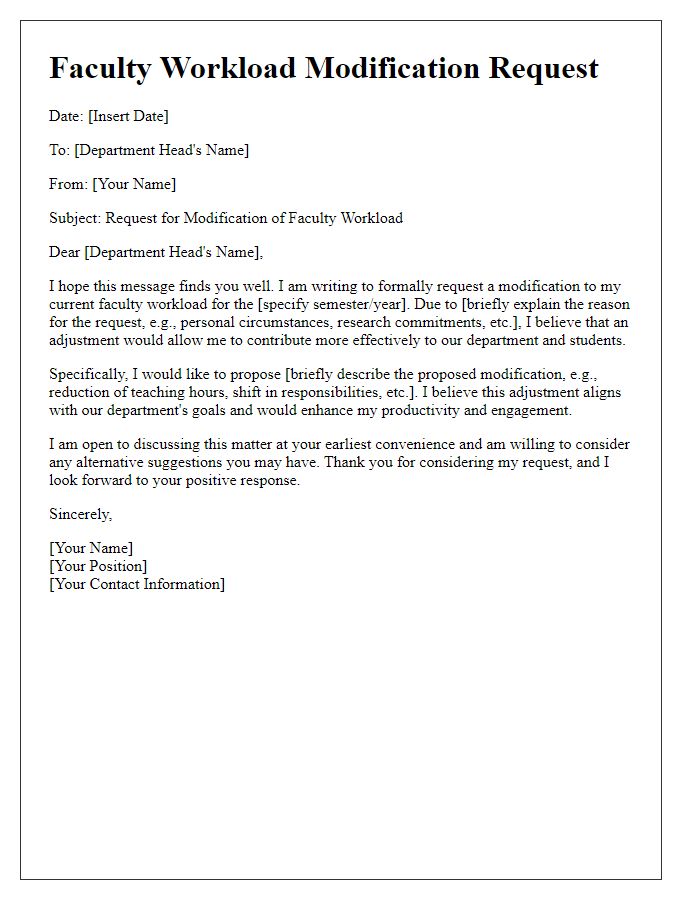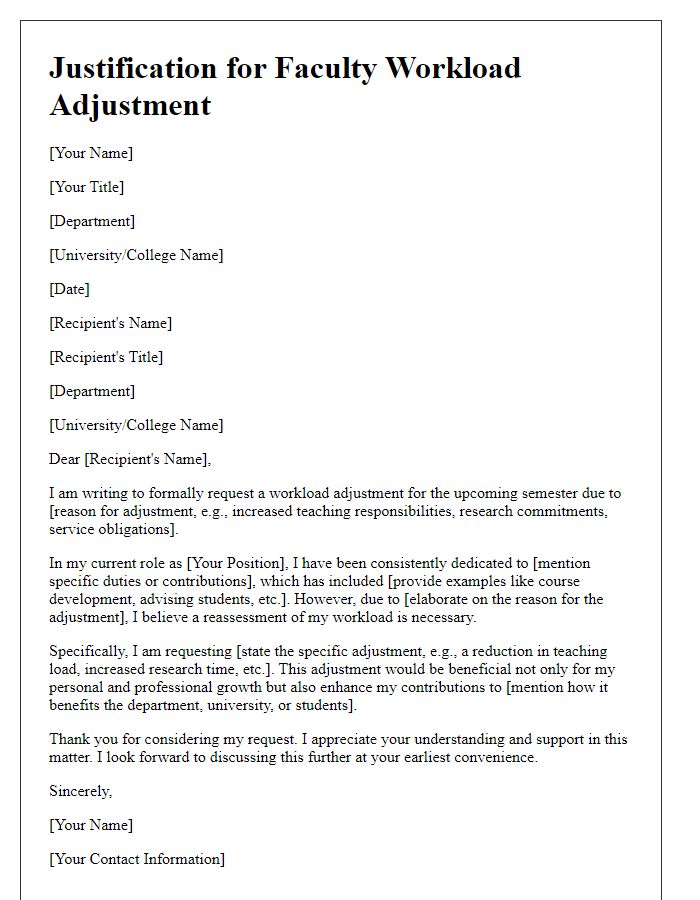Are you feeling overwhelmed by your current workload and wondering how to address it with your department? Crafting a well-structured letter for a faculty workload adjustment request can be an essential step toward finding balance in your academic responsibilities. In this article, we'll guide you through the key elements to include in your letter, ensuring your concerns are communicated effectively and respectfully. So, let's dive in and explore how to make your request resonate!

Clear Subject Line
A faculty workload adjustment request aims to address specific circumstances affecting an academic's responsibilities or commitments. Detailed reasons such as unexpected personal issues, changes in course enrollment numbers, or departmental demands can motivate this request. The request should include quantifiable data about the current workload, like the number of courses taught (e.g., three undergraduate classes), student count (e.g., 120 students), and research commitments (e.g., two ongoing projects) compared to institutional policy guidelines. Clarity in specifying the desired adjustment, such as a reduction in teaching hours or additional support for research-related tasks, is essential to facilitate consideration by the administration.
Personal Introduction
Requesting a faculty workload adjustment involves articulating specific challenges and needs related to teaching, research, or service responsibilities. Factors influencing such a request may include personal circumstances, departmental changes, or shifts in institutional priorities. For example, an increase in student enrollment in a specific course (such as Introduction to Psychology with 150 students) may create additional grading demands that exceed typical expectations. Furthermore, pursuing significant research projects, like a study on social media's impact on mental health, often requires dedicated time not accounted for in standard workload calculations. A well-structured request considers these elements, demonstrating a clear understanding of how adjustments will enhance productivity and overall departmental effectiveness.
Reason for Request
A faculty workload adjustment request is essential when addressing personal circumstances affecting academic responsibilities. For instance, family emergencies, health issues, or unforeseen professional commitments can necessitate a reevaluation of teaching and research loads. In particular, a faculty member at a university may seek to balance responsibilities between large lecture courses and one-on-one advising sessions, impacting student engagement and academic outcomes. The request should outline specific challenges, such as juggling multiple committees that collectively require more than 20 hours per week, which hinders time dedicated to course preparation and student interaction. Clarity in explaining the rationale for adjustments promotes understanding and facilitates a positive response from administrative bodies.
Supporting Evidence and Documentation
Faculty workload adjustments can be a crucial factor for ensuring effective teaching and research balance. Documentation such as performance reviews, student evaluations, and peer assessments provide essential evidence of teaching effectiveness. Furthermore, workload calculations based on the university's guidelines, including credit hours assigned and committee responsibilities, illustrate the distribution of tasks. Specific examples of projects, grants, or publications can highlight research demands on faculty time. In addition, letters from department chairs or colleagues may reinforce the need for adjustments based on comparative analyses within similar departments or institutions. Collectively, this evidence supports faculty requests for workload modifications that reflect their actual contributions and responsibilities in the academic environment.
Proposed Adjustment Plan
Proposed Adjustment Plan outlines specific changes to workload distribution for faculty members to enhance productivity and academic quality. Adjustments may include reallocating teaching hours, such as decreasing course load from 4 to 3 classes per semester, to allow more focus on research initiatives and student mentoring. Additionally, implementing flexible office hours at varying times throughout the week can cater to diverse student schedules, promoting better engagement. Furthermore, incorporating collaborative projects with local industry partners, such as internships or co-op programs, can enrich the learning experience and strengthen community ties. Overall adjustments aim to balance academic responsibilities and foster a supportive educational environment in higher education institutions.













Comments